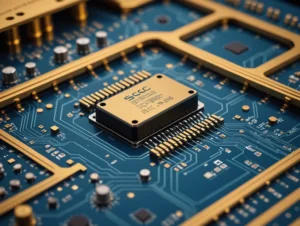Historically, photonics has faced significant challenges, particularly in the context of fabless photonics companies. One of the primary obstacles is the highly specialized nature of photonics manufacturing processes. Different photonic devices often require entirely distinct materials and fabrication methods, making it challenging to consolidate production into a single process.
For example, a typical photonic communication system may include various components manufactured using incompatible processes. RF CMOS or bipolar silicon processes are used for high-bandwidth electronics, CMOS for digital circuits, diffused waveguides for optical multiplexers, indium phosphide for lasers, and germanium for photodetectors. Each material is chosen specifically for optimal performance in its respective role, resulting in an ecosystem where components must be individually packaged and connected, usually through optical fibers. This leads to high costs and inefficiencies.
Moreover, many photonic components are produced in specialized fabrication facilities at very low volumes, driving up costs even further. Only a few devices, such as VCSELs (vertical-cavity surface-emitting lasers) and components for PON (passive optical networks), are fabricated at a wafer scale, but even these are often used as discrete components.
Another major issue arises from the packaging processes required in photonics. These processes demand extremely precise alignments (down to submicron accuracy) and often involve expensive packaging materials like hermetically sealed, gold-coated cases. This adds further to the overall expense of photonic systems.
Promise of Silicon Photonics
The future of silicon photonics lies in its potential to integrate many of these diverse functions into a single chip or package. By utilizing the same fabrication infrastructure used for advanced microelectronics, silicon photonics can radically reduce production costs. Silicon-based systems-on-chip can integrate a variety of photonic and electronic components, which could revolutionize the industry by lowering costs and enabling high-complexity systems to be produced more efficiently.
This approach could greatly decrease the cost of data transmission through fiber optics and open up new applications for photonics in various industries. However, until these challenges of integration, packaging, and cost-efficiency are addressed, the road to widespread commercialization remains challenging for fabless photonics companies.





